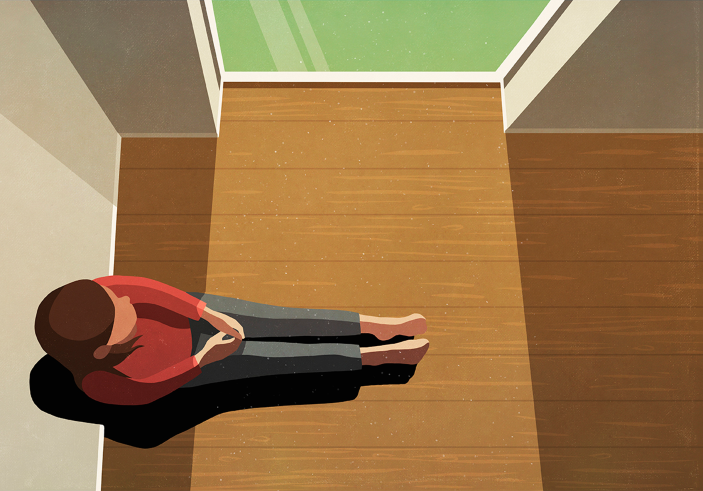
Loneliness and social isolation are associated with a range of serious negative physical and mental health consequences and can affect people across the lifespan. As these are among the most formidable current public health issues, identifying interventions are paramount.
Themes of solitude and being by oneself date back to antiquity. From Chinese Taoist philosophy to the hermetic traditions of the ancient Greeks, solitude and seclusion have been revered means for seeking higher wisdom and alignment with the universe. Although there is still an appreciation for engaging in or consciously choosing solitude for activities such as meditation, with modern life have emerged less-desirable byproducts of being alone: loneliness and social isolation. Well before the forced social distancing implemented during the COVID-19 pandemic lockdown, philosophers and researchers had pointed to the growing disconnect that so many people seem to experience because of the contemporary modes and obligations of living. Whether artifacts of interacting with digital technology or driven by broad sociological and demographic trends, loneliness and social isolation have become a deeply worrying public health issue, of great enough concern to warrant a US Surgeon General advisory addressing ‘Our Epidemic of Loneliness and Isolation’ in 2023 (US Department of Health and Human Services, https://go.nature.com/3OXwMkw; 3 May 2023).

Social isolation may refer to a state of being ‘alone’, but what distinguishes it is the objective context and lack or diminished frequency of social connection or contact. Loneliness, as many psychologists conceptualize it, is the distress that arises when there is a perceived disconnect between a person’s needs for social connection and the quality and quantity of those connections in actuality. Together, loneliness and social isolation have become a substantial burden marked by physical and mental health consequences, including increased risk for developing a range of cardiometabolic and neuropsychiatric conditions, such as heart disease, type 2 diabetes, stroke, dementia, mood disorders, suicidality and early mortality. However, identifying the mechanisms by which loneliness and social isolation contribute to these negative health outcomes poses many challenges that stem from individual differences, the salience of social factors as they change over the course of the lifespan, and the multisystem pathophysiology involved.
There are readily discernible situations in which social isolation might contribute to poorer health — for example, by creating barriers for accessing medical care for a person who has limited mobility and is reliant on others for transportation. But mapping the physiological and psychological processes associated with loneliness can be far more complex and more difficult to assess, and may pose potentially additive risks for some people. The experience of loneliness or what some contemporary research refers to as ‘perceived social isolation’ has been linked to changes in neuroendocrine function, including heightened activation of the hypothalamic–pituitary–adrenocortical axis, dysregulated immune responses and increased chronic systemic inflammation. Loneliness and social isolation have also been associated with neural signatures, such as altered default mode network activity and functional and structural differences in prefrontal cortical and limbic regions linked to emotion processing.
The broader literature on loneliness and social isolation does not always distinguish physical or objective social isolation as conceptually or functionally distinct from perceived social isolation. Nevertheless, the perceptual aspects of social isolation and how a person interprets their particular levels of social contact may be more influential in producing deleterious effects on physical and mental health. However, more work needs to be done to elucidate how these pathways may operate independently or in concert to negatively affect health. Other key questions concern whether there are specific factors or behaviors that might mitigate the experience of loneliness and social isolation, especially outside of well-controlled experimental conditions.
Finding interventions for loneliness and social isolation that are not only effective but can be scaled to reach different populations are crucial. In this issue of Nature Mental Health, we publish an Article from Benedyk et al. that explores whether physical activity could be one such interventional strategy for ameliorating the effects of loneliness and social isolation. Investigating a cohort of young, healthy adults (18–28 years of age), this study applied a range of measures, including accelerometry for real-life assessment of physical activity and smartphone-based diaries to record social contact. After the ambulatory portion of the study, a subset of the participants also underwent resting-state functional magnetic resonance imaging. The authors found that physical activity significantly attenuated the reduced well-being associated with lower social contact and that participants with higher default mode network connectivity had the largest compensation for this deficit — a pattern that suggests that people who are more highly predisposed to loneliness may receive the greatest emotional benefit from physical activity.